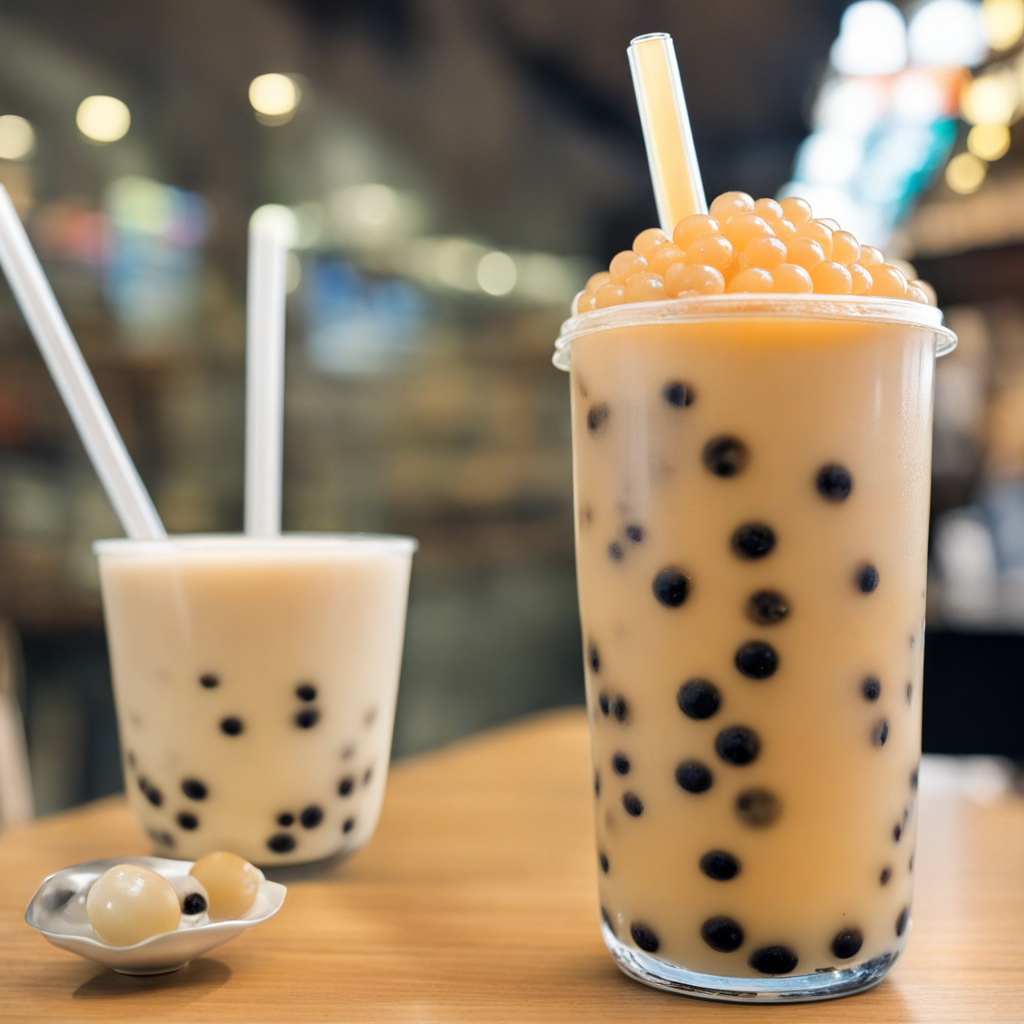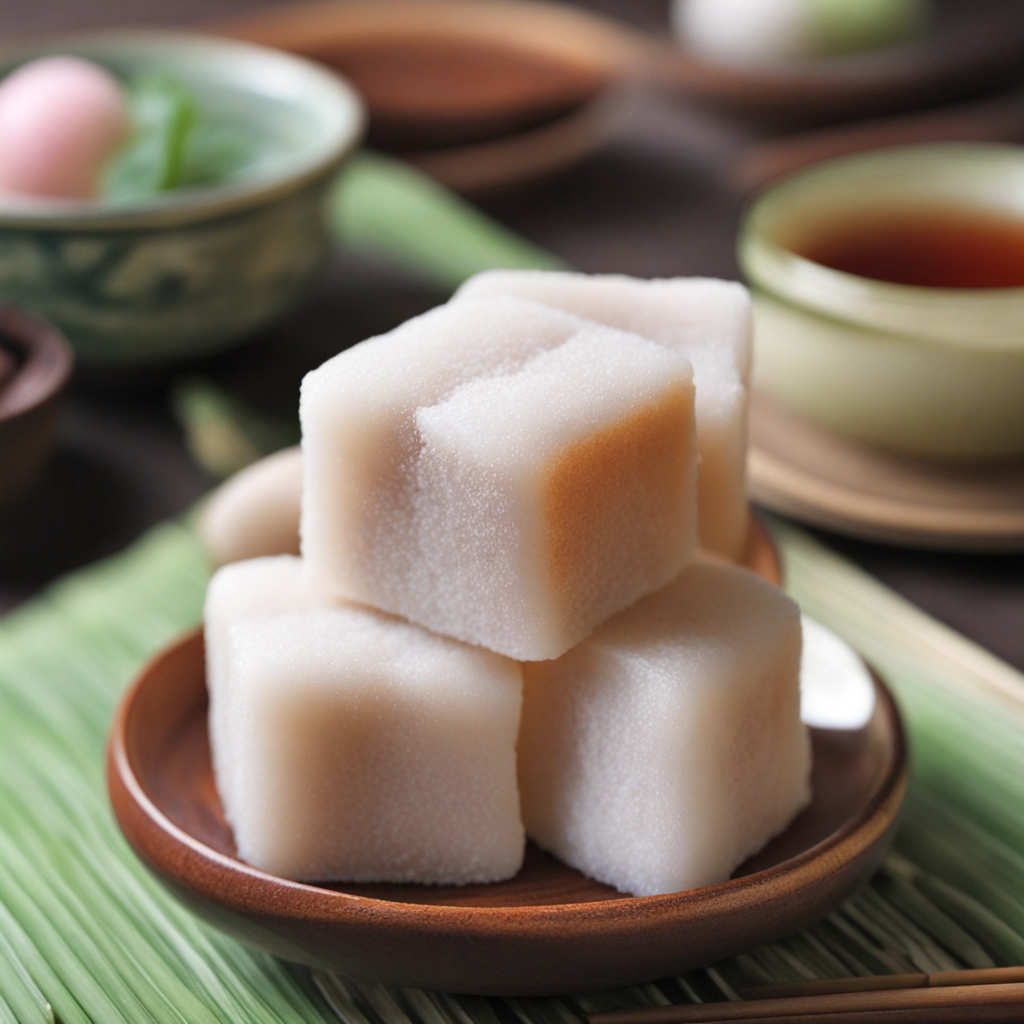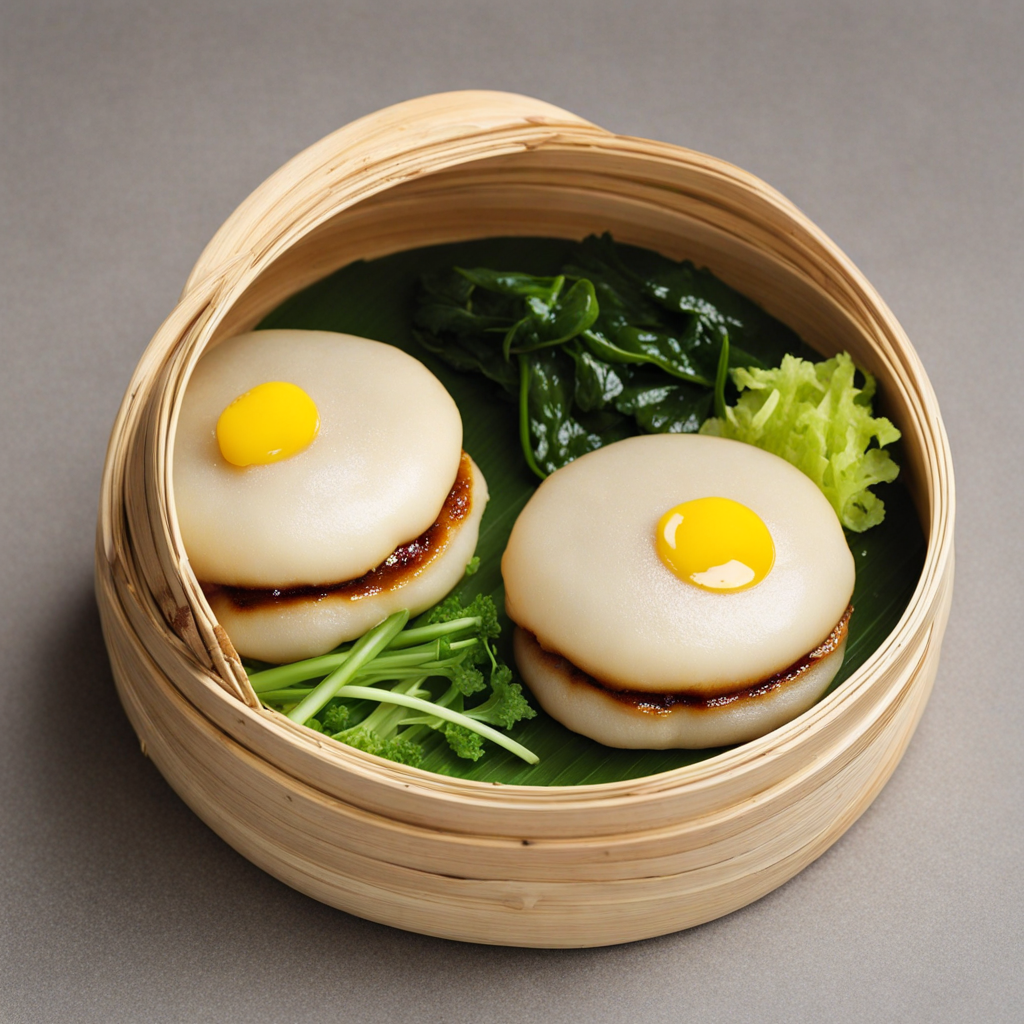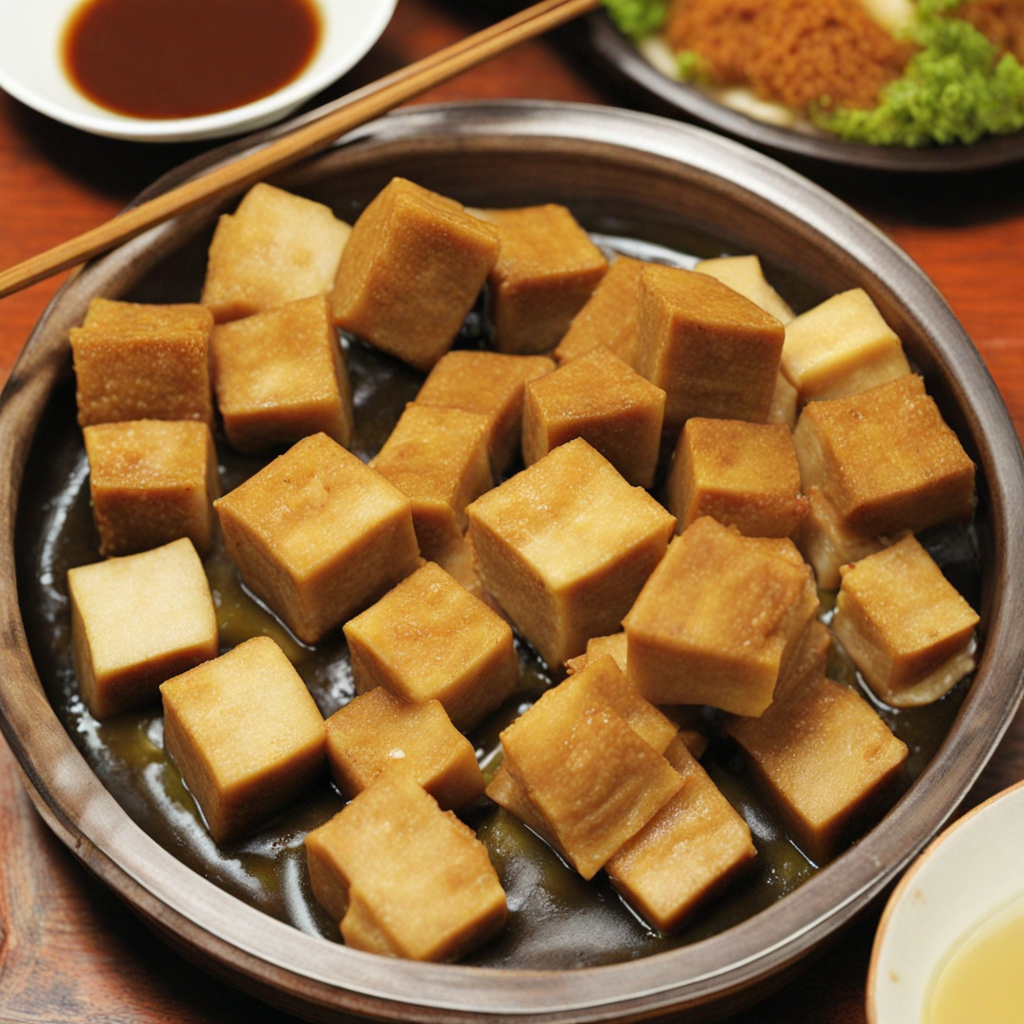Guabao
Guabao, often referred to as the Taiwanese hamburger, is a delightful street food that captures the essence of Taiwanese flavors in a simple yet exquisite package. This indulgent dish features a soft, fluffy steamed bun, known as a mantou, which is typically made from wheat flour. The bun is slightly sweet and has a pillowy texture that perfectly complements the savory fillings. Traditionally, Guabao is filled with braised pork belly, which is slow-cooked to tender perfection, allowing the rich flavors of soy sauce, rice wine, and spices to infuse the meat. The result is a succulent filling that melts in your mouth with each bite, offering a taste that is both sweet and savory. To elevate the flavor profile, Guabao is often garnished with pickled mustard greens, crushed peanuts, and fresh cilantro. The pickled greens add a tangy crunch that contrasts beautifully with the richness of the pork, while the crushed peanuts introduce a nutty texture and flavor that rounds out the dish. Fresh cilantro brings a burst of herbal freshness, enhancing the overall experience. The combination of textures and tastes creates a harmonious balance that is both satisfying and addictive, making Guabao a favorite among locals and visitors alike. This delightful food can be enjoyed as a quick snack or as part of a larger meal. It's commonly found at night markets and food stalls throughout Taiwan, where it is served hot and fresh, allowing you to savor its deliciousness right away. Trying Guabao is not just about tasting a new dish; it’s about experiencing a piece of Taiwanese culture and tradition, making it a must-try for anyone looking to explore the diverse and rich culinary landscape of Taiwan.
How It Became This Dish
The History of 割包 (Gua Bao): A Culinary Journey from Taiwan #### Origins Gua Bao (割包), often referred to as "Taiwanese pork belly bun," has a rich tapestry of history woven into the cultural fabric of Taiwan. Its origins trace back to the 17th century, during the period of the Ming Dynasty when the island began to see significant migration from mainland China, particularly from Fujian Province. The influx of Chinese immigrants brought with them various culinary traditions, and Gua Bao emerged as a local adaptation of these influences. Historically, Gua Bao is believed to have been inspired by the traditional Chinese baozi (steamed buns) and guo bao (which translates to "cut bun"). The term "Gua" means "to cut," while "Bao" refers to a bun or wrapper. The dish consists of a soft, steamed bun filled primarily with braised pork belly, along with pickled vegetables, crushed peanuts, and fresh herbs. This combination of flavors and textures has made it a beloved snack and street food throughout Taiwan. #### Cultural Significance In Taiwan, Gua Bao is more than just a culinary delight; it is a symbol of comfort and nostalgia. The dish is commonly associated with celebrations, family gatherings, and street food culture, reflecting Taiwan's diverse societal influences and rich gastronomic history. Traditionally, Gua Bao was eaten during festivals and special occasions, signifying celebration and abundance. The dish is also linked to the concept of "bounty" in Taiwanese culture. The tender pork belly, complemented by fresh herbs and pickled vegetables, represents prosperity and good fortune. Additionally, in Taiwanese folklore, it is said that eating Gua Bao during the Lunar New Year brings blessings and happiness for the year ahead. Gua Bao has transcended its humble origins to become a fixture in Taiwanese culinary identity, and it has gained international recognition as a symbol of Taiwan's vibrant street food scene. This transformation reflects the broader evolution of Taiwanese cuisine, which melds indigenous flavors, Chinese culinary techniques, and influences from Japanese and Western cuisines. #### Development Over Time As Taiwan's political and social landscape evolved, so too did the development of Gua Bao. During the Japanese colonial period (1895-1945), Taiwan underwent significant changes in infrastructure, agriculture, and culinary practices. The introduction of new ingredients and preservation techniques had a lasting impact on the way food was prepared and consumed. Gua Bao, with its simple yet satisfying components, adapted to these changes, becoming a staple in night markets and street-side vendors. In the post-war era, particularly in the 1960s and 1970s, Taiwan experienced rapid urbanization and economic growth, which influenced food culture significantly. With the rise of the working class and the burgeoning night market culture, Gua Bao found a new audience. Street vendors began to serve Gua Bao on a larger scale, leading to increased popularity. The dish became synonymous with Taiwan’s identity as a culinary melting pot, attracting both locals and tourists. In the late 20th and early 21st centuries, Taiwan's globalization and the proliferation of food media led to an explosion of interest in Gua Bao beyond its traditional confines. Chefs began to experiment with the dish, incorporating innovative ingredients and flavors while still honoring the traditional recipe. The rise of food blogs, social media, and food television programs brought Gua Bao into the limelight, showcasing its versatility and inviting a broader audience to experience its unique taste. #### Modern Interpretations and Global Reach Today, Gua Bao has transcended its street food roots to become a popular dish in Taiwanese restaurants around the world. Chefs in cities such as New York, Los Angeles, and London have embraced Gua Bao, offering their own interpretations that often highlight local ingredients or unique culinary techniques. The dish is frequently featured in gourmet settings, where chefs experiment with the fillings, offering variations that include fried chicken, beef brisket, and even vegetarian options. Additionally, Gua Bao has become a symbol of Taiwan's culinary diplomacy. As the global appetite for authentic Taiwanese cuisine continues to grow, the dish is often presented at international food festivals, cultural exchanges, and culinary competitions, showcasing the rich heritage and flavors of Taiwan. It has become a representative dish of Taiwan's identity, promoting the island's culture and history to an ever-expanding audience. Moreover, Gua Bao represents a broader trend in food culture where traditional dishes are being revitalized and reinterpreted for contemporary palates. The combination of the bun's fluffy texture, the rich, savory pork belly, and the crunch of pickled vegetables makes Gua Bao a compelling choice for both traditionalists and modern food enthusiasts alike. #### Conclusion The journey of Gua Bao from its humble beginnings as a street food staple to an internationally recognized dish is a testament to Taiwan's rich culinary heritage. It embodies the fusion of flavors and cultures that define Taiwan's identity, representing both history and innovation. As it continues to evolve and adapt, Gua Bao remains a delicious symbol of comfort, celebration, and the enduring spirit of Taiwanese cuisine. Today, when one bites into a Gua Bao, they are not only enjoying a flavorful dish but also partaking in a rich narrative that spans centuries. From its origins in Fujian Province to its current status as a global culinary icon, the story of Gua Bao is a reflection of Taiwan's vibrant culture, resilience, and the universal love for good food. As Gua Bao continues to capture hearts and palates worldwide, its legacy as a beloved Taiwanese dish is sure to endure for generations to come.
You may like
Discover local flavors from Taiwan







